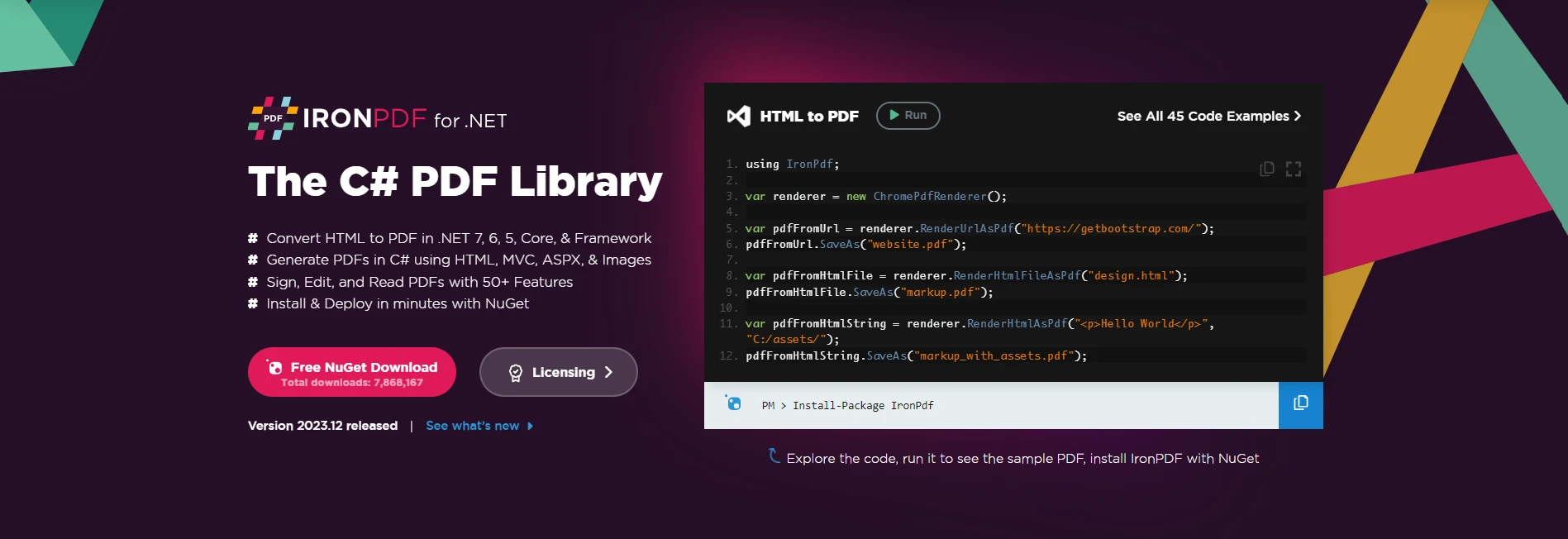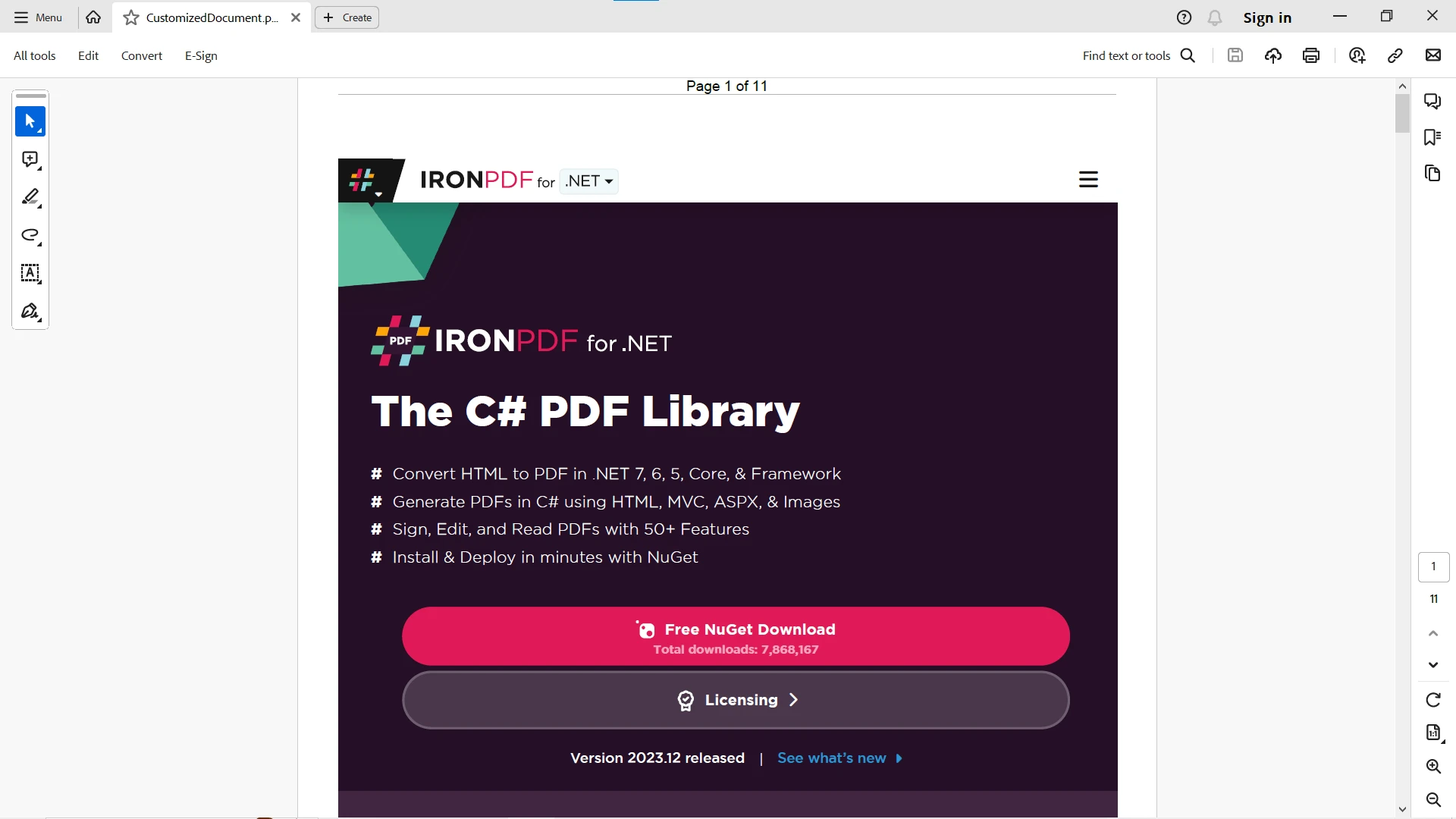Published January 15, 2024
Null Coalescing Operator C# (How It Works For Developer)
In the ever-increasing landscape of C# programming, developers encounter scenarios where dealing with nullable value types is a common challenge. To address this, C# offers an elegant solution—the Null Coalescing Operator (??).
In this article, we'll explore the nuances of using the Null Coalescing Operator, understanding its functionality, use cases, and how it transforms the way you handle a nullable type value in your C# code.
Understanding the Null Coalescing Operator
The Null Coalescing Operator (??) or Null Conditional Operator is a concise and powerful binary operator in C# designed to streamline null value handling. It provides a succinct syntax for choosing a default value when encountering nullable or reference types, reducing the need for verbose null checks.
The Basics: Syntax and Usage
The syntax of the Null Coalescing Operator is straightforward. It consists of two consecutive question marks (??). The operator is used to provide a default value when the expression on its left side evaluates to null.
string name = possiblyNullName ?? "DefaultName";string name = possiblyNullName ?? "DefaultName";Dim name As String = If(possiblyNullName, "DefaultName")In this example, if possiblyNullName is null, the variable name will be assigned the value "DefaultName."
Simplifying Null Checks
One of the primary advantages of the Null Coalescing Operator is its ability to simplify null checks, only allowing non-nullable value type, making the code more concise and readable. Consider the following scenario without the operator:
string result;
if (possiblyNullString != null)
{
result = possiblyNullString;
}
else
{
result = "DefaultValue";
}string result;
if (possiblyNullString != null)
{
result = possiblyNullString;
}
else
{
result = "DefaultValue";
}Dim result As String
If possiblyNullString IsNot Nothing Then
result = possiblyNullString
Else
result = "DefaultValue"
End IfWith the Null Coalescing Operator, the same code becomes:
string result = possiblyNullString ?? "DefaultValue";string result = possiblyNullString ?? "DefaultValue";Dim result As String = If(possiblyNullString, "DefaultValue")This reduction in boilerplate code enhances code clarity and reduces the chances of null-related bugs.
Chaining Null Coalescing Operators for Default Values
The Null Coalescing Operator can be chained to provide a series of fallback values, allowing for a cascading approach to defaults.
string result = possiblyNullString ?? fallbackString ?? "DefaultValue";string result = possiblyNullString ?? fallbackString ?? "DefaultValue";Dim result As String = If(If(possiblyNullString, fallbackString), "DefaultValue")In this example, if possiblyNullString is null, the operator checks fallbackString. If both are null, the final fallback is "DefaultValue."
Application in Method Parameters
The Null Coalescing Operator is particularly useful when specifying default values for method parameters.
public void PrintMessage(string message = null)
{
string defaultMessage = "Default Message";
string finalMessage = message ?? defaultMessage;
Console.WriteLine(finalMessage);
}public void PrintMessage(string message = null)
{
string defaultMessage = "Default Message";
string finalMessage = message ?? defaultMessage;
Console.WriteLine(finalMessage);
}Public Sub PrintMessage(Optional ByVal message As String = Nothing)
Dim defaultMessage As String = "Default Message"
Dim finalMessage As String = If(message, defaultMessage)
Console.WriteLine(finalMessage)
End SubIn this method, if the message is null, the default value "Default Message" is used.
Integration with Ternary Operator
The Null Coalescing Operator can be combined with the Ternary Operator (? :) for more advanced conditional handling.
int? nullableValue = possiblyNullInt ?? (anotherNullableInt.HasValue ? anotherNullableInt.Value : 0);int? nullableValue = possiblyNullInt ?? (anotherNullableInt.HasValue ? anotherNullableInt.Value : 0);Dim nullableValue? As Integer = If(possiblyNullInt, (If(anotherNullableInt.HasValue, anotherNullableInt.Value, 0)))Here, if possiblyNullInt is null, it checks whether anotherNullableInt has a value. If yes, it uses that value; otherwise, it defaults to 0.
Introducing IronPDF: A C# PDF Powerhouse

IronPDFis a feature-rich C# library designed to simplify the complexities of working with PDFs. Whether you're generating invoices, reports, or any other document, IronPDF empowers you to seamlessly convert HTML content into polished and professional PDFs directly within your C# application.
Installing IronPDF: A Quick Start
To incorporate IronPDF into your C# project, begin by installing the IronPDF NuGet package. Execute the following command in your Package Manager Console:
Install-Package IronPdf
Alternatively, you can locate "IronPDF" in the NuGet Package Manager and proceed with the installation from there.
Generating PDFs with IronPDF
Creating a PDF using IronPDF is a straightforward process. Consider the following code example:
var htmlContent = "<html><body><h1>Hello, IronPDF!</h1></body></html>";
// Create a new PDF document
var pdfDocument = new IronPdf.ChromePdfRenderer();
pdfDocument.RenderHtmlAsPdf(htmlContent).SaveAs("GeneratedDocument.pdf");var htmlContent = "<html><body><h1>Hello, IronPDF!</h1></body></html>";
// Create a new PDF document
var pdfDocument = new IronPdf.ChromePdfRenderer();
pdfDocument.RenderHtmlAsPdf(htmlContent).SaveAs("GeneratedDocument.pdf");Dim htmlContent = "<html><body><h1>Hello, IronPDF!</h1></body></html>"
' Create a new PDF document
Dim pdfDocument = New IronPdf.ChromePdfRenderer()
pdfDocument.RenderHtmlAsPdf(htmlContent).SaveAs("GeneratedDocument.pdf")In this example, IronPDF is utilized to render HTML String content into a PDF document, that is subsequently saved to the specified location.
Integration of Null Coalescing Operator with IronPDF
While the Null Coalescing Operator is primarily a language feature for handling null values in a variety of scenarios, including variable assignments and method parameters, its direct integration with IronPDF may not be a common use case. IronPDF focuses on document generation, and the null coalescing operation is more applicable in scenarios where default values are needed.
However, developers can leverage the Null Coalescing Operator when working with variables or parameters related to IronPDF operations. For instance, when setting up configurations or handling optional parameters, the operator can be used to provide default values. The preceding example highlights the importance of using the Null Coalescing Operator to avoid any null reference type errors:
var defaultRenderOptions = new ChromePdfRenderOptions();
defaultRenderOptions.PaperSize = IronPdf.Rendering.PdfPaperSize.A4;
defaultRenderOptions.MarginTop = 20; // Set top margin in millimeters
defaultRenderOptions.MarginBottom = 20; // Set bottom margin in millimeters
defaultRenderOptions.MarginLeft = 10; // Set left margin in millimeters
defaultRenderOptions.MarginRight = 10; // Set right margin in millimeters
defaultRenderOptions.CssMediaType = IronPdf.Rendering.PdfCssMediaType.Screen; // Set CSS media type
defaultRenderOptions.PrintHtmlBackgrounds = true; // Enable printing of background elements
defaultRenderOptions.TextHeader = new TextHeaderFooter
{
CenterText = "Page {page} of {total-pages}", // Set center header text
DrawDividerLine = true // Draw a divider line between the header and content
};
// Function to get user-provided renderOptions
ChromePdfRenderOptions GetUserProvidedRenderOptions()
{
// Replace this with your logic to retrieve user-provided renderOptions
return null; // For demonstration purposes, returning null to simulate no user input
}
var pdfDocument = new IronPdf.ChromePdfRenderer();
pdfDocument.RenderingOptions = GetUserProvidedRenderOptions() ?? defaultRenderOptions;
pdfDocument.RenderUrlAsPdf("https://ironpdf.com").SaveAs("CustomizedDocument.pdf");var defaultRenderOptions = new ChromePdfRenderOptions();
defaultRenderOptions.PaperSize = IronPdf.Rendering.PdfPaperSize.A4;
defaultRenderOptions.MarginTop = 20; // Set top margin in millimeters
defaultRenderOptions.MarginBottom = 20; // Set bottom margin in millimeters
defaultRenderOptions.MarginLeft = 10; // Set left margin in millimeters
defaultRenderOptions.MarginRight = 10; // Set right margin in millimeters
defaultRenderOptions.CssMediaType = IronPdf.Rendering.PdfCssMediaType.Screen; // Set CSS media type
defaultRenderOptions.PrintHtmlBackgrounds = true; // Enable printing of background elements
defaultRenderOptions.TextHeader = new TextHeaderFooter
{
CenterText = "Page {page} of {total-pages}", // Set center header text
DrawDividerLine = true // Draw a divider line between the header and content
};
// Function to get user-provided renderOptions
ChromePdfRenderOptions GetUserProvidedRenderOptions()
{
// Replace this with your logic to retrieve user-provided renderOptions
return null; // For demonstration purposes, returning null to simulate no user input
}
var pdfDocument = new IronPdf.ChromePdfRenderer();
pdfDocument.RenderingOptions = GetUserProvidedRenderOptions() ?? defaultRenderOptions;
pdfDocument.RenderUrlAsPdf("https://ironpdf.com").SaveAs("CustomizedDocument.pdf");Dim defaultRenderOptions = New ChromePdfRenderOptions()
defaultRenderOptions.PaperSize = IronPdf.Rendering.PdfPaperSize.A4
defaultRenderOptions.MarginTop = 20 ' Set top margin in millimeters
defaultRenderOptions.MarginBottom = 20 ' Set bottom margin in millimeters
defaultRenderOptions.MarginLeft = 10 ' Set left margin in millimeters
defaultRenderOptions.MarginRight = 10 ' Set right margin in millimeters
defaultRenderOptions.CssMediaType = IronPdf.Rendering.PdfCssMediaType.Screen ' Set CSS media type
defaultRenderOptions.PrintHtmlBackgrounds = True ' Enable printing of background elements
defaultRenderOptions.TextHeader = New TextHeaderFooter With {
.CenterText = "Page {page} of {total-pages}",
.DrawDividerLine = True
}
' Function to get user-provided renderOptions
'INSTANT VB TODO TASK: Local functions are not converted by Instant VB:
'ChromePdfRenderOptions GetUserProvidedRenderOptions()
'{
' ' Replace this with your logic to retrieve user-provided renderOptions
' Return Nothing; ' For demonstration purposes, returning null to simulate no user input
'}
Dim pdfDocument = New IronPdf.ChromePdfRenderer()
pdfDocument.RenderingOptions = If(GetUserProvidedRenderOptions(), defaultRenderOptions)
pdfDocument.RenderUrlAsPdf("https://ironpdf.com").SaveAs("CustomizedDocument.pdf")In this example, the GetUserProvidedRenderOptions() function is a placeholder for the logic to retrieve the user-provided ChromePdfRenderOptions. If the user does not provide or skip renderOptions (returns null), the null coalescing operator (??) will use the default renderOptions obtained from the GetDefaultRenderOptions() function.

For further options and PDF-related tasks, please visit this documentation page on the IronPDF website.
Conclusion
In conclusion, the Null Coalescing Operator in C# offers a concise and expressive approach to handling null values. Its simplicity and readability make it a valuable tool for improving code quality and reducing redundancy. Whether dealing with method parameters, variable assignments, or complex conditional logic, the Null Coalescing Operator empowers developers to navigate null values with elegance in the dynamic world of C# programming.
IronPDF and the C# Null Coalescing Operator complement each other in the development landscape. While IronPDF excels in PDF document generation, the Null Coalescing Operator provides a concise and elegant approach to handling null values in your C# code.
Although their direct integration might not be the focal point, using the Null Coalescing Operator in tandem with IronPDF-related variables and configurations and even when providing HTML strings can enhance the overall robustness and readability of your document generation code. Embrace the power of IronPDF and the elegance of the Null Coalescing Operator to elevate your C# document generation workflows.
IronPDF offers a free trial to its users to test out its complete functionality before making a decision.











